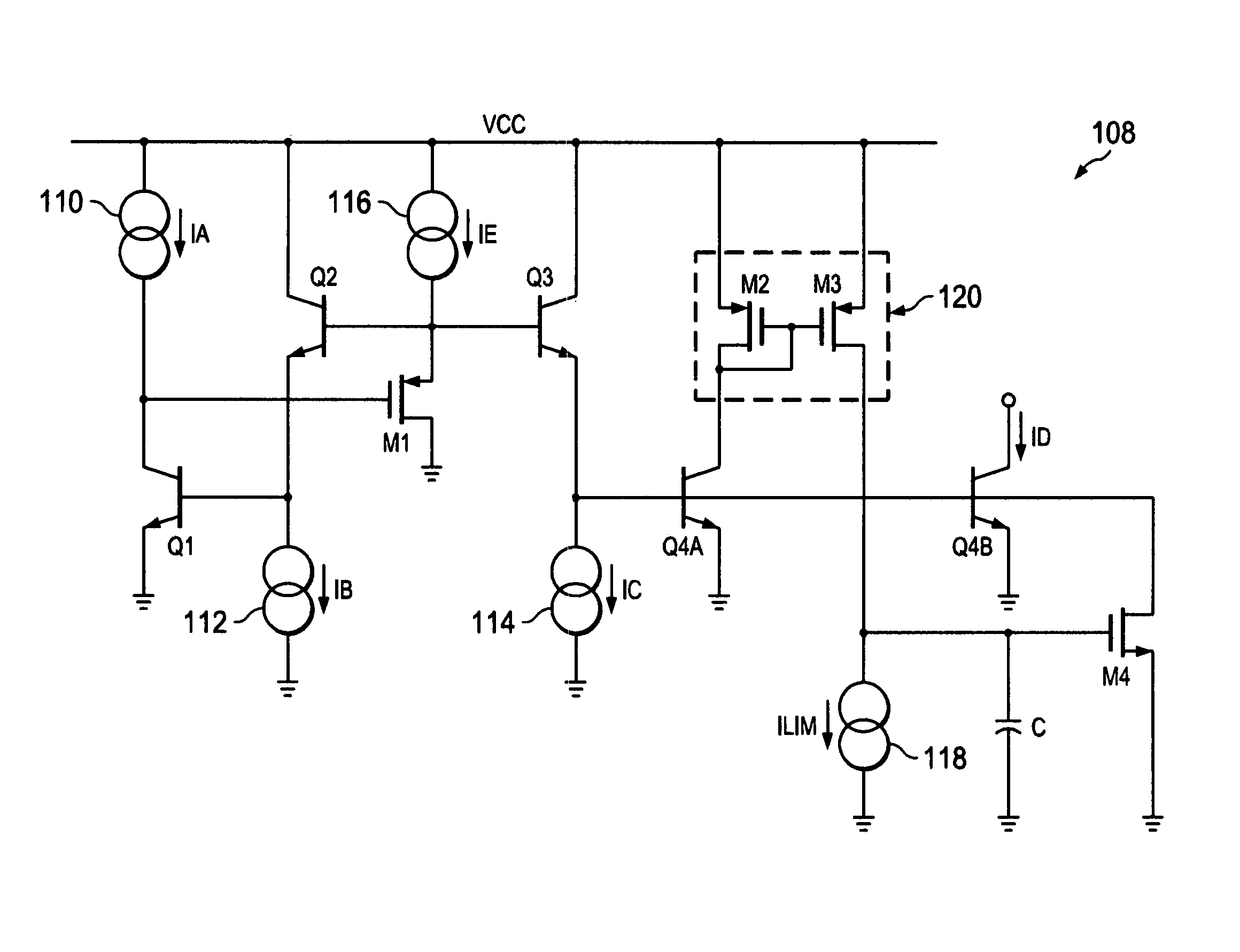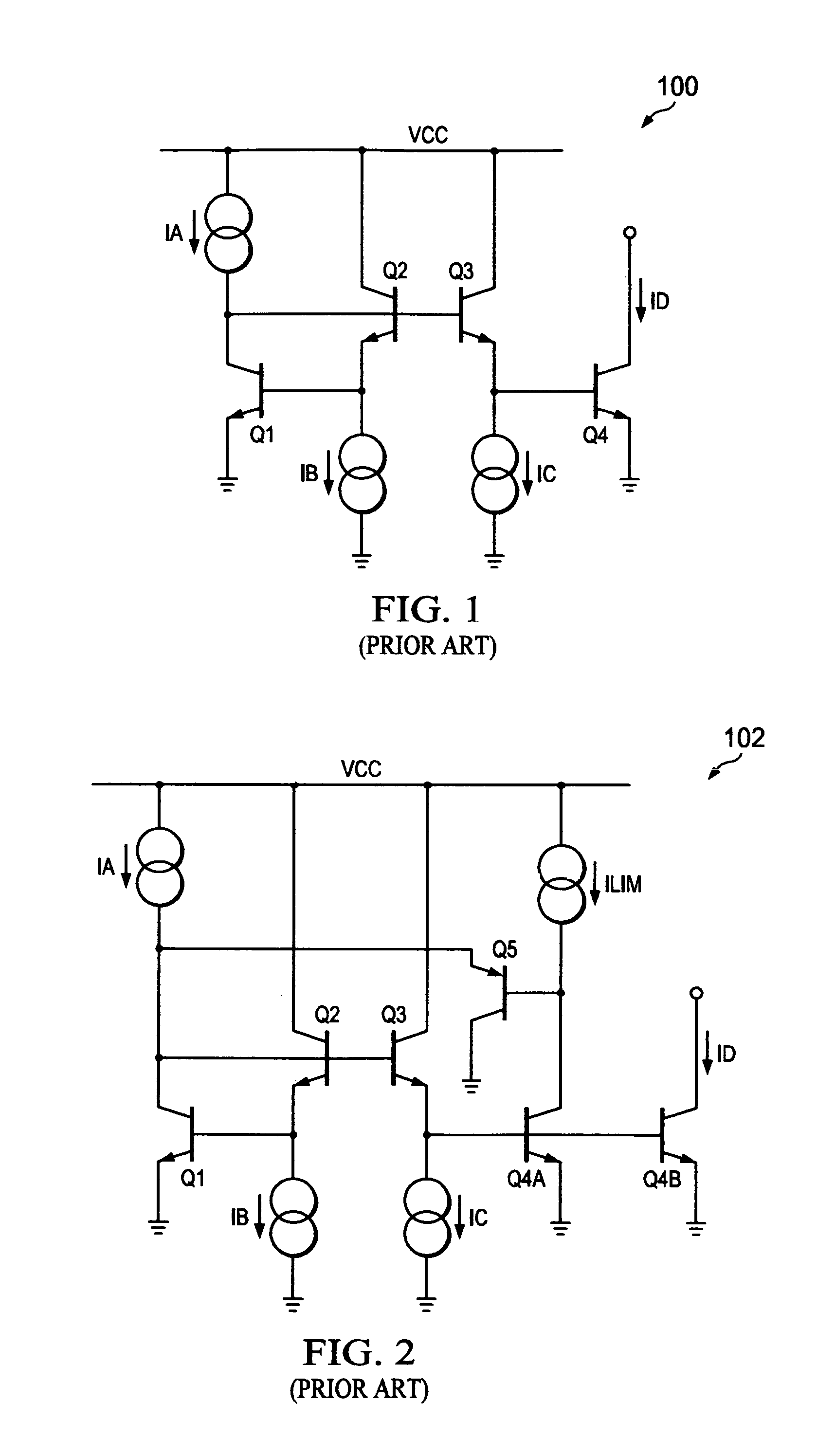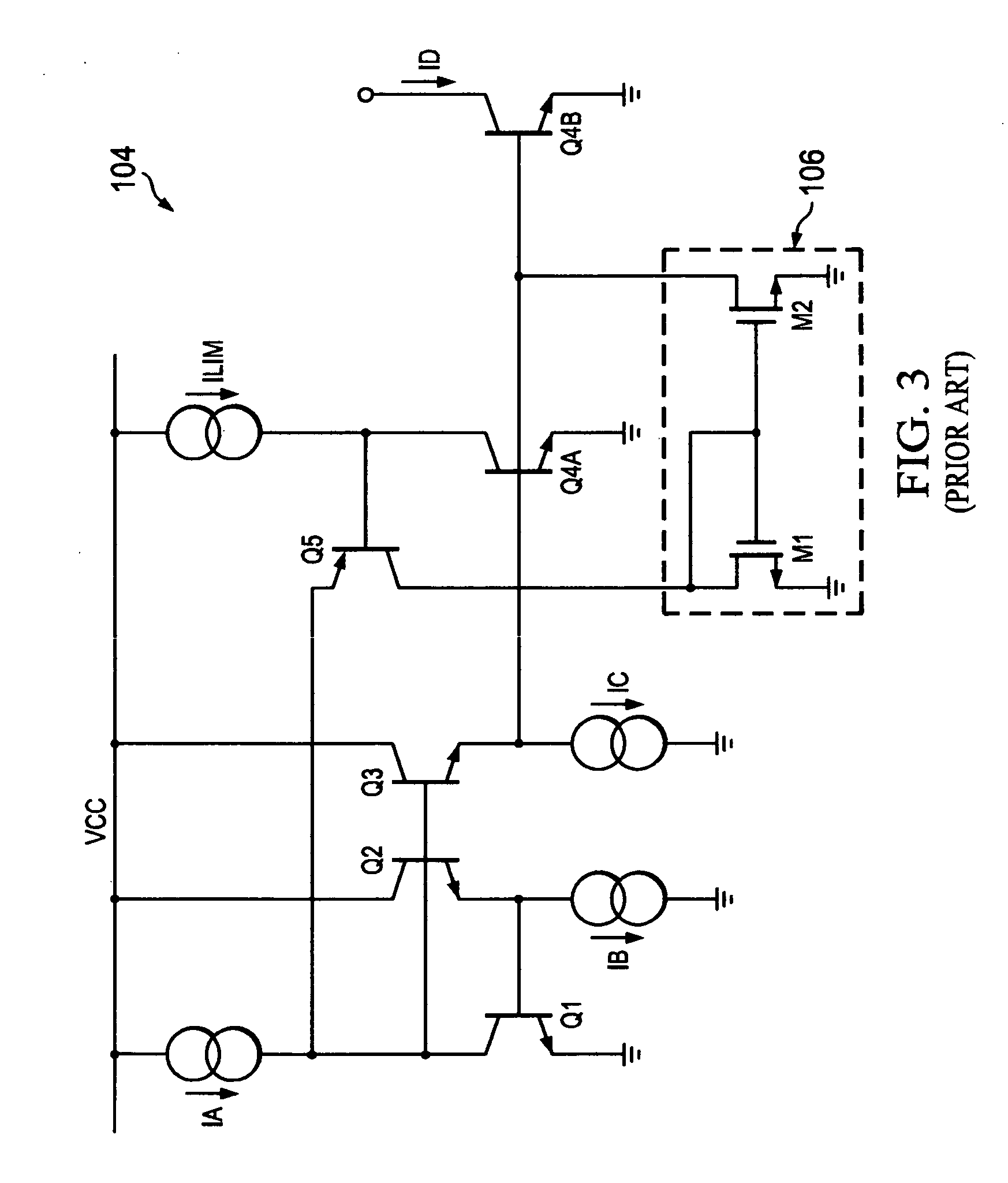Implementing a piecewise-polynomial-continuous function in a translinear circuit
a polynomial-continuous, piecewise technology, applied in the direction of instruments, electric/magnetic computing, analogue computers, etc., can solve the problems of reducing electrical arc and power, and affecting the performance of the translinear circuit. , to achieve the effect of increasing the current flow through the first translinear element and reducing the current flow
- Summary
- Abstract
- Description
- Claims
- Application Information
AI Technical Summary
Problems solved by technology
Method used
Image
Examples
Embodiment Construction
[0026]A translinear circuit 108 in accordance with embodiments of the present invention, as shown in FIG. 4, implements a piecewise-polynomial-continuous function (and is capable of operating within relatively low headroom conditions). For example, the translinear circuit 108 can even operate within an overall circuit that can provide a supply voltage VCC down to about 1.8 volts.
[0027]In the illustrated embodiment, the translinear circuit 108 generally includes translinear elements (bipolar junction transistors—BJTs) Q1, Q2, Q3, Q4A and Q4B, MOSFET transistors M1, M2, M3 and M4 and a capacitor C. Input currents IA, IB, IC, IE and ILIM to the translinear circuit 108 are represented as being produced by current sources 110, 112, 114, 116 and 118, respectively, but are generally produced by the overall circuit into which the translinear circuit 108 is incorporated, e.g. a hot swap controller circuit. Additionally, an output of the translinear circuit 108 is generally represented by an ...
PUM
 Login to View More
Login to View More Abstract
Description
Claims
Application Information
 Login to View More
Login to View More - R&D
- Intellectual Property
- Life Sciences
- Materials
- Tech Scout
- Unparalleled Data Quality
- Higher Quality Content
- 60% Fewer Hallucinations
Browse by: Latest US Patents, China's latest patents, Technical Efficacy Thesaurus, Application Domain, Technology Topic, Popular Technical Reports.
© 2025 PatSnap. All rights reserved.Legal|Privacy policy|Modern Slavery Act Transparency Statement|Sitemap|About US| Contact US: help@patsnap.com



